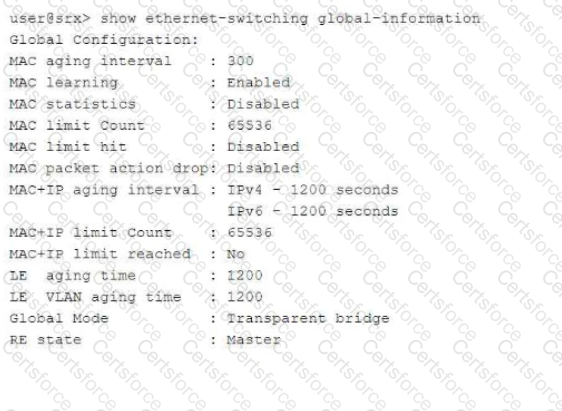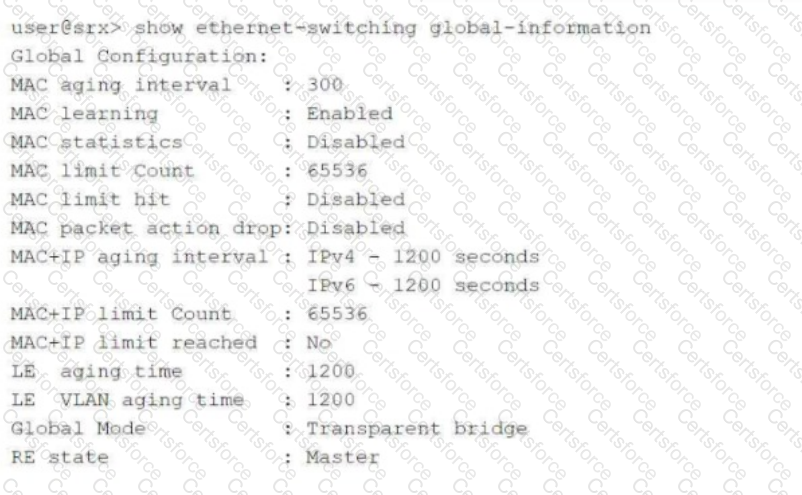You configure two Ethernet interfaces on your SRX Series device as Layer 2 interfaces and add them to the same VLAN. The SRX is using the default L2-learning setting. You do not add the interfaces to a security zone.
Which two statements are true in this scenario? (Choose two.)
Exhibit:

Referring to the exhibit, which two statements are correct? (Choose two.)
You want to create a connection for communication between tenant systems without using physical revenue ports on the SRX Series device.
What are two ways to accomplish this task? (Choose two.)
How does an SRX Series device examine exception traffic?
You configured two SRX series devices in an active/passive multimode HA setup.
In this scenario, which statement is correct?
You have an initial setup of ADVPN with two spokes and a hub. A host at partner Spoke-1 is sending traffic to a host at partner Spoke-2.
In this scenario, which statement is true?
You have deployed automated threat mitigation using Security Director with Policy Enforcer, Juniper ATP Cloud, SRX Series devices, and EX Series switches.
In this scenario, which device is responsible for blocking the infected hosts?
What is the advantage of using separate st0 logical units for each spoke connection?
Click the Exhibit button.

Referring to the exhibit, which two statements are correct? (Choose two.)
You have deployed an SRX Series device at your network edge to secure Internet-bound sessions for your local hosts using source NAT. You want to ensure that your users are able to interact with applications on the Internet that require more than one TCP session for the same application session.
Which two features would satisfy this requirement? (Choose two.)